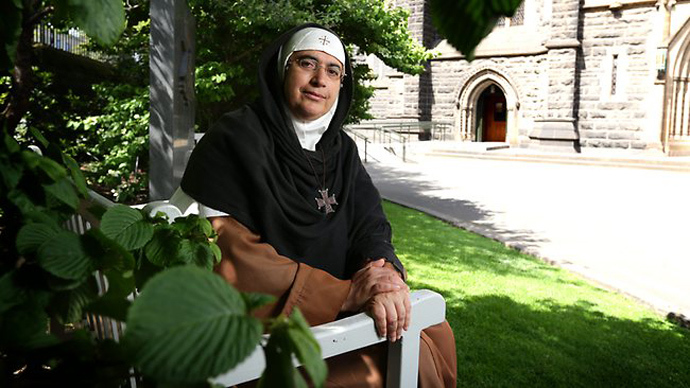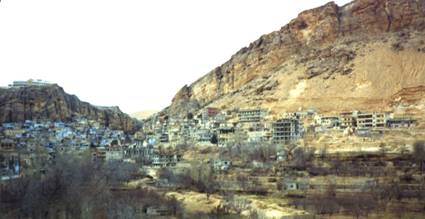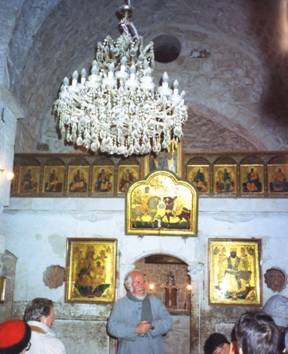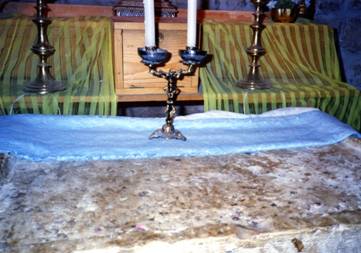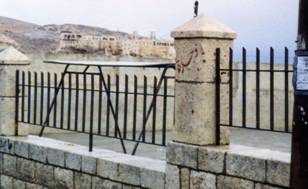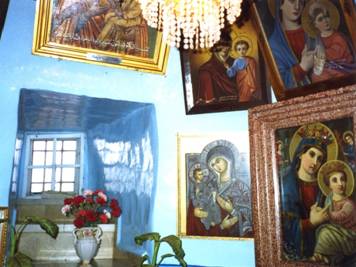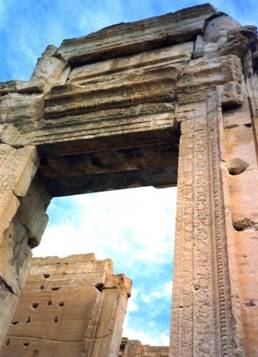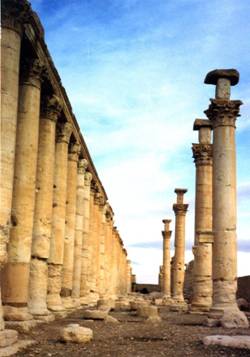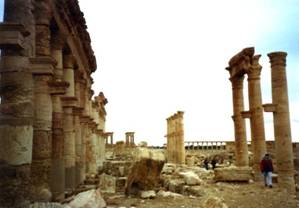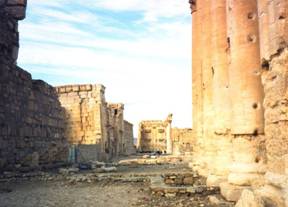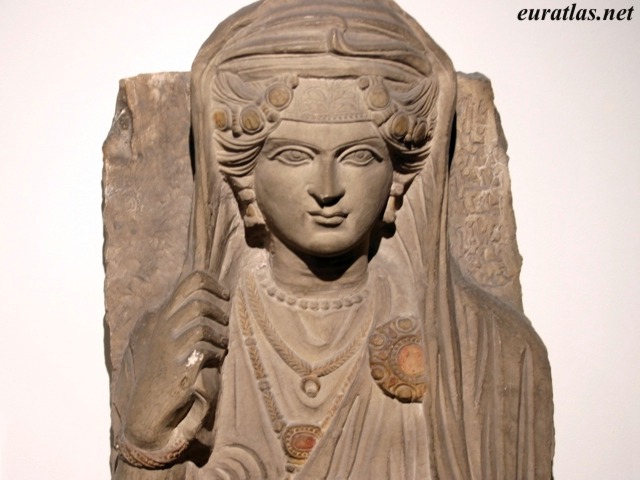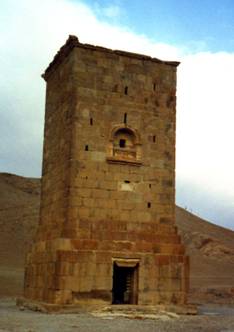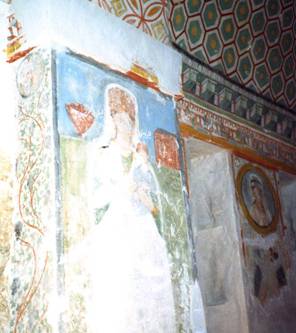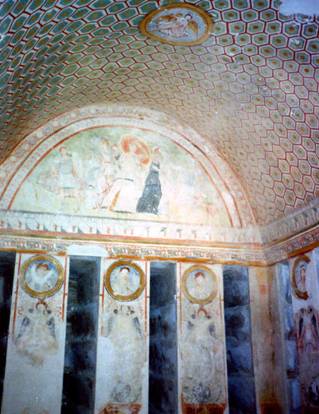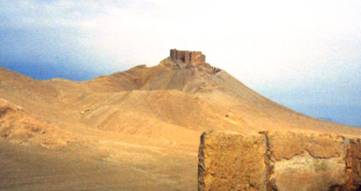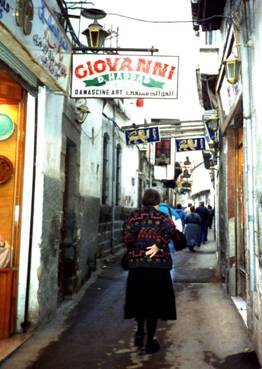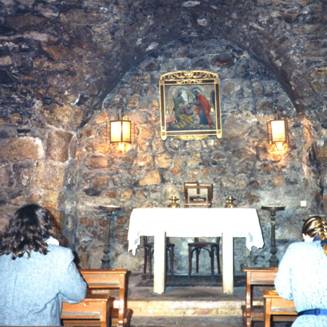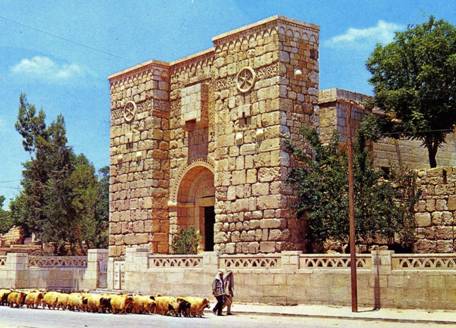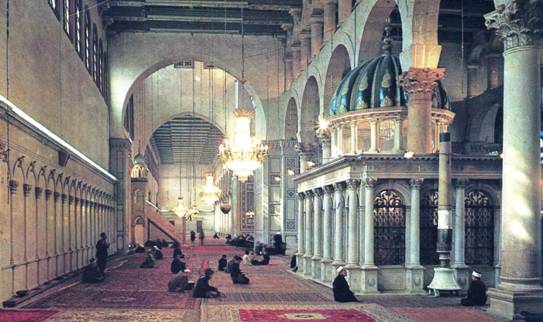MOTHER AGNES MARIAM EL-SALIB REVEALS FALSE FLAG IN SYRIA … PLUS PHOTOS OF ANCIENT SYRIA
MOTHER AGNES MARIAM EL-SALIB
REVEALS FALSE FLAG IN SYRIA
Mother Agnes Mariam el-Salib
******
FEW WESTERN CHRISTIANS THINK IN TERMS OF
SYRIA BEING A MAJOR PLAYER
IN THE HISTORY OF EARLY CHRISTIANITY
Nancy B. Detweiler, M.Ed., M.Div.
One of the villages heavily impacted by the Syrian uprising is Ma’alaula.
MA’ALAULA, SYRIA
By far, the Village of Ma’aloula is the most important Christian site in Syria. In Syrian, Ma’aloula means “the entrance,” probably referring to the gorge in between the mountains. Ma’aloula is the only village in the world that still speaks an ancient dialect of Aramaic—the dialect most likely spoken by Jesus.
St. Sergius Chapel in Ma’aloula
St. Sergius Chapel was built in the 4th century. Although the village of Ma’aloula dates far back in history, there are only two chapels and few remains that are very ancient. This first chapel is the St. Sergius convent (Mar Sarkis), a Greek Catholic chapel. It has a beautiful display of icons on the wall above the altar. This chapel is considered to be one of the oldest, if not the oldest, in Christendom.
Greek Orthodox chapel dedicated to St. Thecia (Mar Taqla)
Down the mountain into the village is the other chapel, a Greek Orthodox chapel dedicated to St. Thecia (Mar Taqla) and located in the lower monastery. St. Thecia is said to have been a pupil of the Apostle Paul. She is thought to be buried in the mountain just above the monastery.
The altar in this chapel is the oldest in the world. It predates the 325 A.D. Council at Nicea where it was outlawed because it resembles an altar of animal sacrifice. The villages of Ma’aloula and Seidnaya are located in the Anti-Lebanon Mountains and are of great importance to Christendom.
SEIDNAYA, SYRIA
This village, where houses are built around a rock with a very old monastery at the top, is considered a place for religious pilgrimage. A steep climb is the only way up to the monastery, which is said to date back to the Emperor Justinian (483-565).
Legend states that the Virgin Mary appeared to Justinian and asked him to found the monastery. After entering through a maze of passages we finally reach the Chapel of the Virgin. The walls are covered with beautiful icons including one said to have been painted by St. Luke, author of the Gospel of Luke. This chapel was very sacred to Christians and at one point was the second most sacred Christian place of pilgrimage after Jerusalem. The Crusaders called it “Notre Dame de Sardeneye.”
Hilltop monastery around which the village of Seidnaya was built
Legend states that the Virgin Mary appeared to Justinian and asked him to found the monastery. After entering through a maze of passages we finally reach the Chapel of the Virgin. The walls are covered with beautiful icons including one said to have been painted by St. Luke, author of the Gospel of Luke. This chapel was very sacred to Christians and at one point was the second most sacred Christian place of pilgrimage after Jerusalem. The Crusaders called it “Notre Dame de Sardeneye.”
Chapel of the Virgin
TADMOR – PALMYRA, SYRIA
“And King Hiram [of Tyre] sent to King Solomon one hundred and twenty talents of gold. And this is the portion of tribute which King Solomon levied to build the house of the Lord and his own house. And he also built the wall of Jerusalem and Millo and Hazor and Megiddo, and Gezer. For Pharaoh, king of Egypt, had gone up and conquered Gezer and burned it with fire and slain the Canaanites who dwelt in the city and given it as a present to his daughter, Solomon’s wife. And Solomon built Gezer and Beth-hauran the lower and Baalath and TADMOR in the land of the wilderness and all the cities for storage that Solomon had, and the cities for the chariots and cities for the horsemen and whatsoever Solomon desired to build in Jerusalem and in Lebanon and in all the land of his dominion.” (I Kings 9:14-19, II Chronicles 8:1-6)
Monumental architectural feats are characteristic of the Middle East. There exists many theories as to how these huge stone structures were created, but not one gives a feasible explanation for a world without cranes. Metaphysicians would suggest these immense stones were levitated into place.
Tadmor was located in a fertile oasis in the Syrian desert 140 miles northeast of Damascus. Its location between Mesopotamia and the western part of the Fertile Crescent rendered it an important caravan city between 2000 B.C. and the early Islamic period in the 7-8th centuries C.E. (i.e. A.D.). Tadmor reached its height of prosperity during the Roman period and was then called PALMYRA. The well-preserved ruins tell a detailed story of a wealthy Syrian metropolis. (Harper’s Bible Dictionary)
PALMYRA’s magnificent ruins reveal much about the reign of Queen Zenobia during the 2nd century C.E. Palmyra is located near a hot-water spring and was an ideal place for caravans to stop and rest. These caravans were traveling between Iraq and Syria, Lebanon, Israel, and Jordan—and were trading in silk from China to the Mediterranean Sea.
Statue of Queen Zenobia
Queen Zenobia was an astonishing ruler. She was exceptionally brilliant and attractive. A gifted linguist, she was an eloquent speaker of Palmyrian, Greek, and Egyptian. Queen Zenobia had a wide knowledge of politics, and in her court, were many philosophers, scholars, and theologians.
Tower Tomb
Interior of tower tomb – Note how well the paint is preserved
This tower tomb dates back to pre-Roman times. The grayish section beside the woman and child painting is composed of stone shelves onto which the coffins were placed rising from the floor to the ceiling.
Interior of the tower tomb
revealing the stone shelves (between the paintings)
on which the dead rested.
This tower tomb is an excellent example of the wealth present in ancient Tadmor-Palmyra.
Monastery at Palmyra
DAMASCUS, SYRIA
“A street called Straight”
“Now there was in Damascus a disciple named Ananias, and the Lord said to him in a vision …. ‘Arise, and go into the street which is called Straight and enquire at the house of Judah for Saul of the city of Tarsus; for behold, he is praying and he has seen in a vision a man named Ananias coming in and laying his hands on him to restore his sight’ …. Then Ananias went to him at the house, and laying his hands on him, said, ‘Saul, my brother, our Lord Jesus, who appeared to you on the way when you were coming, has sent me that you may receive your sight and be filled with the Holy Spirit.’ And in that hour, there fell from his eyes something like scales; and his eyesight was restored; and he arose and was baptized.” (Acts 9:1-19)
Hanania Church is located on the site of the House of Judah where Ananias healed Saul/Paul of his blindness.
“Saul became more powerful, and he made the Jews who dwelt in Damascus tremble when he proved that Jesus is the Christ. After he had been there many days, the Jews plotted against him to kill him. But their conspiracy was made known to Saul, how they watched the gates of the city day and night to kill him. Then the disciples placed him in a basket and let him down over the wall during the night.” (Acts 9:22-25)
MOSLEM – CHRISIAN COOPERATION
Ummayad Mosque
Damascus, Syria
History of Ummayad Mosque:
The pulpit is in the center.
History of the mosque: 3000 B.C.E. – Aramean Temple to the god Hadad.
1st century C.E. (A.D.) – Temple to Jupiter
193-211 – Restored under Septimus Severus
379 C.E. (A.D.) – Church of St. John the Baptist under the Emperor Theodosius.
636 – South wall became mosque shared with Muslims after Damascus was taken by the Arabs.
708-715 – Ummayad Caliph Al-Walid built the Great Mosque in the present shape. The Christians were compensated with four permanent church sites elsewhere within the old city.
Damascus, Syria
ALL BELONG TO
THE FAMILY OF GOD!
WE ARE ONE!







